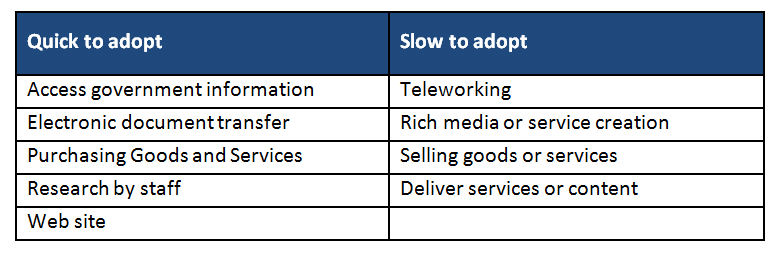There’s No Holy Grail, But There’s Utilization
by Michael Curri
Only through driving an understanding of the benefits of multiple e-solutions (enabled by broadband) can a community can truly create a platform for innovation. To clarify, when I talk about broadband I mean high-speed, reliable and affordable access to the Internet so that a business, organization or household can effectively participate in the digital economy.
Some people have the experience, or can figure out what fiber can mean for them – but many do not. They need to be shown and have the value of FTTH (fiber) be personalized to the needs of their business, organization, or household – it’s not self-evident to most people how, for example, to transform their operations and deliver their services or content online. And of course, many e-solutions are more complex and sophisticated in nature, making them slower to be adopted (or understood … or both). This issue needs to be understood and addressed by providers of FTTH.
The table below shows rankings based on adoption rates for organizations with average utilization levels equal to a Digital Economy index (DEi) score of 6. As a reminder, DEi is a proprietary SNG measure where scores range from 1 to 10 (10 being highest). The higher scores reflecting the greater the number, scope and sophistication of the Internet activities deployed in an organization.
e-Solutions Adoption Rates for “Average” Organizations (with DEi of 6)

Those with lower utilization adopt the easier to use applications first while more sophisticated and difficult applications tend to be adopted later, especially by organizations that already have high utilization.
What does it mean to have a high capacity, high quality, reliable and affordable Internet? It depends on who the end-user is (by industry sector), what they’re currently doing (i.e. their business operations), what they want to be doing, and what they should be doing to remain competitive
Until the FTTH vendors figure out how to personalize the value of FTTH to end-users, adoption and meaningful use will continue to be an issue – and they won’t be seeing the uptake by end-users that can justify their investment in FTTH networks.
This is where the business case and the economic case for investing in FTTH needs to be looked at from an economic perspective. SNG presented on impacts from broadband and FTTH from SNG findings and I then turned to how that information could be used to drive economic development through broadband. I encourage you to review the material covered at the conference by clicking here.
